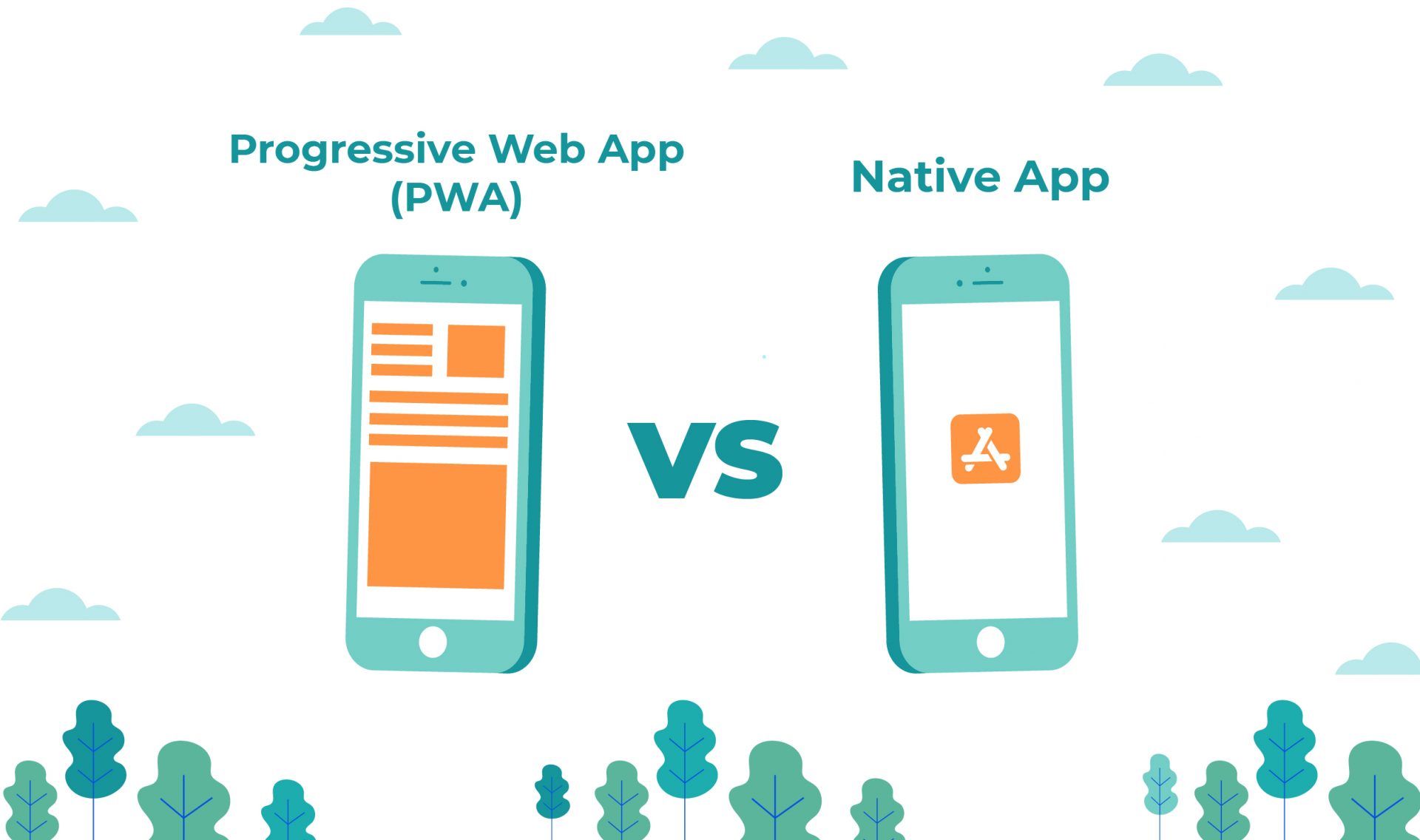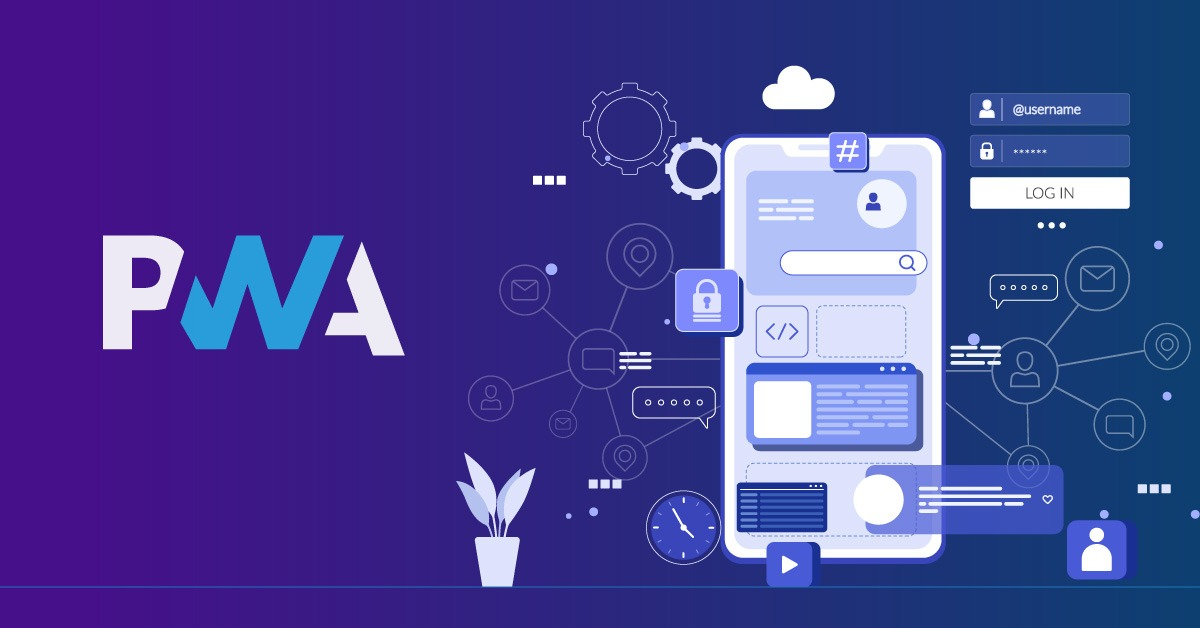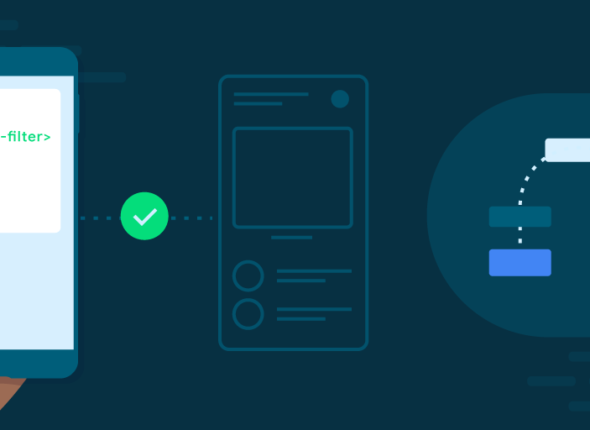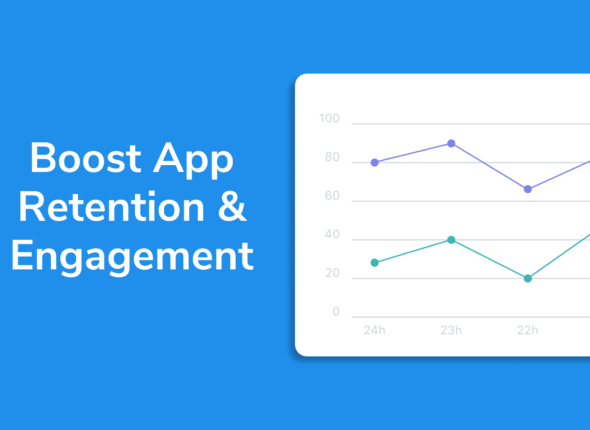App development can be a maddening process.
If you’re going to develop an app, you’re faced with a tidal wave of tough choices.
Should you design an iOS app, Android app, or both? Which one first? How often will you make updates? How will you prevent your app from becoming obsolete as technology changes?
Today’s app development environment is full of these kinds of difficult decisions.
But thankfully, there’s a new solution that’s quickly emerging as an alternative.
Today we will learn about progressive web apps, its applications ,uses etc.
What Are Progressive Web Apps (PWAs)?
Progressive Web Apps (PWAs) are web applications that behave like native mobile apps but are built using web technologies like HTML, CSS, and JavaScript. They offer app-like functionalities, such as offline access, push notifications, and the ability to be installed on a device’s home screen, all while being accessible via a web browser.
PWAs are designed to improve the user experience by combining the best features of both websites and native apps. They provide a seamless, fast, and engaging experience without requiring users to download an app from an app store.
Key Features of PWAs
Progressive Enhancement:
- PWAs are built with progressive enhancement, meaning they work for every user, regardless of browser capabilities. Advanced features like offline caching and push notifications are only available in browsers that support them, but even older browsers can render the basic version of the app.
Responsive Design:
- PWAs are designed to be responsive, automatically adjusting to different screen sizes and device orientations, making them suitable for mobile phones, tablets, laptops, and desktops.
Offline Capability:
- Using service workers (a JavaScript file that acts as a proxy between the web app, browser, and network), PWAs can cache important resources. This allows the app to load even without an internet connection, offering a continuous user experience.
App-like Interactions:
- PWAs offer an app-like experience by mimicking the navigation, functionality, and performance of native mobile apps. They can be installed on the user’s home screen, have smooth animations, and provide instant interactions like a traditional app.
Installable:
- PWAs can be installed directly onto a user’s device via a web browser, bypassing app stores like Google Play or Apple’s App Store. Once installed, they behave similarly to native apps, complete with a home screen icon and full-screen mode.
Secure by Default:
- PWAs are served over HTTPS to ensure all interactions between the user and the app are encrypted. This ensures that data exchanged between the app and the server is secure and protects against man-in-the-middle attacks.
Push Notifications:
- PWAs support push notifications, enabling developers to re-engage users with timely updates, reminders, or promotional content. This is especially useful for increasing user retention and engagement.
Linkable and Shareable:
- Since PWAs are built with web technologies, they have URLs that can be shared easily. Users can access the PWA by simply clicking a link, providing a seamless way to share the app across social platforms or email.
Key Benefits of PWAs

Cross-Platform Compatibility:
- One of the major advantages of PWAs is that they work across multiple platforms—iOS, Android, Windows, and any device that supports a modern browser. This eliminates the need to develop separate apps for each platform, saving time and development costs.
Faster Load Times:
- PWAs utilize caching mechanisms and service workers to load quickly, even under poor network conditions. They are typically lighter than native apps, which makes them more efficient, leading to improved user experience and decreased bounce rates.
Improved User Engagement:
- With features like push notifications, offline functionality, and installability, PWAs are designed to increase user engagement. Users are more likely to stay connected with the app and use it regularly because of these native-app-like features.
No Need for App Store Approval:
- Unlike native apps, which require approval from app stores (such as Google Play or the Apple App Store), PWAs can be published instantly. This speeds up the release process and allows developers to update and fix issues on the go without needing to resubmit apps for approval.
Lower Development and Maintenance Costs:
- PWAs can be developed using a single codebase for multiple platforms, cutting down on the cost of development and ongoing maintenance. Developers only need to maintain one version of the app, rather than separate versions for iOS, Android, and web.
Seamless Updates:
- Since PWAs are web-based, updates happen in the background without the user needing to download or install new versions. This ensures users always have the latest version of the app without any action on their part.
Increased Accessibility:
- PWAs are discoverable through search engines, making them more accessible to users than native apps that are restricted to app stores. With a simple URL, anyone can access the app, regardless of the device they are using.
PWAs vs Native Apps

While native apps offer specific advantages, such as access to hardware features (like GPS, camera, etc.) and more advanced functionality, PWAs come with their own distinct set of benefits:
| Feature | Progressive Web App (PWA) | Native App |
|---|---|---|
| Platform | Works on all browsers and devices | Specific to iOS or Android |
| Installation | Can be installed via browser | Requires download from app store |
| Performance | Fast, lightweight, and optimized | Generally faster, but heavier |
| Offline Access | Supported with caching mechanisms | Fully supported |
| Push Notifications | Supported on most browsers | Fully supported |
| Distribution | Via URL or browser prompt | Requires app store approval |
| Development Cost | Lower (single codebase) | Higher (separate codebases) |
| Maintenance | Easy (single codebase) | Requires platform-specific updates |


Use Cases for PWAs
E-commerce:
- Example: Alibaba developed a PWA for its mobile users, resulting in a 76% increase in conversions and a 30% increase in interaction rates.
- Why PWAs Work: PWAs allow e-commerce platforms to offer a smooth shopping experience, fast load times, and offline access, keeping users engaged even in areas with poor connectivity.
Media and Content Platforms:
- Example: The Washington Post adopted a PWA, which enabled it to deliver news updates quickly with offline reading options.
- Why PWAs Work: Users can access content quickly and even save articles for offline reading, enhancing their experience, especially in regions with inconsistent internet access.
Social Media:
- Example: Twitter launched Twitter Lite, a PWA version that resulted in a 65% increase in pages per session, and a 75% increase in tweets sent.
- Why PWAs Work: PWAs reduce data consumption and provide smooth browsing, perfect for users who have limited data or poor internet access.
Travel and Booking Services:
- Example: Trivago created a PWA that improved engagement by offering offline access and seamless app-like navigation.
- Why PWAs Work: Travel platforms benefit from the ability to load quickly, offer push notifications for deals or booking reminders, and work offline, catering to travelers who may not always have internet access.
Notable Examples of PWAs
Pinterest:
- The PWA of Pinterest is optimized to load quickly and reduce data usage, improving engagement and time spent on the platform by over 40%.
Spotify:
- Spotify offers a PWA version of its music streaming service, which allows users to access music directly from their browser without downloading the app.
Uber:
- Uber’s PWA is lightweight and designed to work efficiently even on slow networks or older devices, providing a fast and seamless ride-booking experience.
Flipkart:
- Flipkart Lite, a PWA for India’s leading e-commerce platform, reduced bounce rates by 20% and increased time spent on the site by over 3x, making it one of the most successful PWAs globally.
Conclusion
Progressive Web Apps (PWAs) are transforming the way users interact with web applications by offering a blend of the best features of native apps and websites. With their cross-platform compatibility, faster loading times, offline capabilities, and reduced development costs, PWAs are a forward-thinking solution for businesses aiming to enhance user engagement and experience. As technology continues to evolve, PWAs are becoming a crucial tool for businesses across various industries, from e-commerce to social media and beyond.
Tips for Reducing App Load Time and Memory Usage
- October 17, 2024
- Com 0
In today’s fast-paced digital world, users expect mobile apps to perform flawlessly, load quickly, and run efficiently. An app that…
Strategies to Reduce App Abandonment and Increase Retention
- October 17, 2024
- Com 0
In the highly competitive app marketplace, user retention is one of the most important metrics for measuring success. While acquiring…
Fintech App Development: Ensuring Compliance and Security
- October 16, 2024
- Com 0
The rapid growth of fintech (financial technology) apps has revolutionized the financial services industry. From mobile banking and digital wallets…
The Future of Mobile Apps in the Travel and Tourism Industry
- October 15, 2024
- Com 0
The travel and tourism industry has undergone a significant transformation in recent years, driven largely by advancements in technology. Mobile…
What Every Developer Should Know About Securing API Endpoints
- October 13, 2024
- Com 0
APIs (Application Programming Interfaces) play a critical role in modern application development, enabling communication between client applications and backend services.…
Integrating Cloud Services into Your Mobile App
- October 12, 2024
- Com 0
Cloud services have revolutionized the way modern mobile apps are developed, deployed, and maintained. Integrating cloud services into your mobile…







